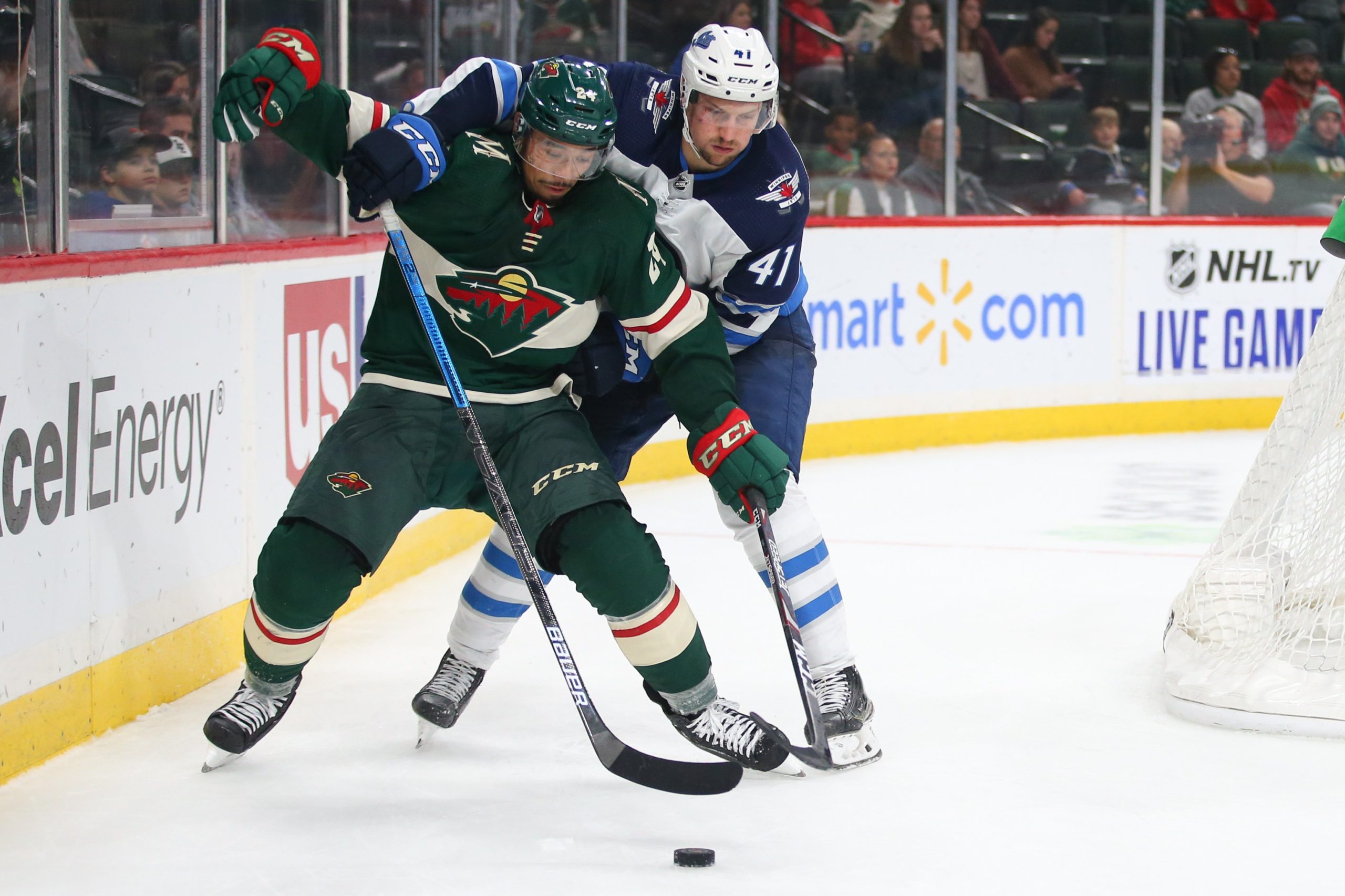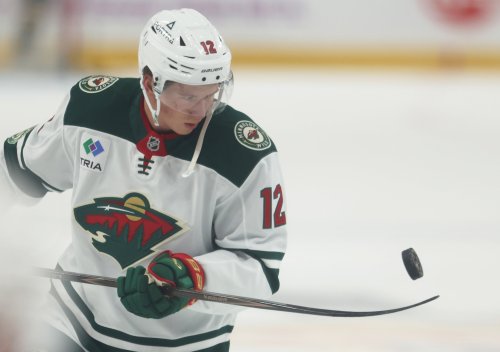
Who is Minnesota’s biggest rival? Depends on who you ask. The NHL clearly thinks it’s the Chicago Blackhawks or St. Louis Blues, as they’ve set up two premiere outdoor games with them as Minnesota’s opponents. The Wild met Chicago in the playoffs several times three years in a row but won just three of 15 games. That’s not a rivalry; that’s a little brother getting beaten up by the older one.
As for St. Louis, they’ve traded postseason upsets with each other, but neither fan base thinks about the other much. It’s the opposite with the Dallas Stars. Since the Stars used to be the Minnesota North Stars, Wild fans care deeply about beating them. But the juice isn’t there on the ice.
The only true rivalry they have is with the Colorado Avalanche. They have postseason history, bad blood between players, and the fanbases despise each other.
One hot rivalry is fun, but wouldn’t it be nice to have another? After all, Colorado only plays Minnesota four times this season. It couldn’t hurt to bring a playoff time atmosphere to some of the other 78 games. Luckily for Minnesota, their neighbors in the True North, the Winnipeg Jets, could fulfill that role this year.
The Wild and Jets have some ideal conditions for growing an intense rivalry. Two passionate fan bases? Check. Close geographical proximity that allows fans to invade the other stadium during matchups? Check (at least, under non-pandemic conditions). With each team in a different country, there’s even potential for an Olympics or World Junior Championship flavor in this duo.
However, the team success hasn’t been there. Neither of these squads has been particularly good, at least at the same time. It’s hard to gain that playoff-type atmosphere when one (or both) teams are mediocre. The two teams met in the postseason just once, and the Jets ousted Minnesota in five games. At the time, the Winnipeg appeared ascendant, and this was the aging Wild’s death rattle.
That was the high point of the Jets, as they’ve turned into a Bizzaro World Wild. While Minnesota was mediocre thanks to having defense and depth but no star power, Winnipeg was mediocre thanks to having star power and goaltending, but no defense. After a year in separate divisions, though, they’ve come back stronger for having patched up their weaknesses.
Minnesota added firepower with Kirill Kaprizov and the emergence of Kevin Fiala and Joel Eriksson Ek as goal-scoring threats. That will help them match up with Winnipeg stars in Mark Scheifele, Nikolaj Ehlers, Blake Wheeler, and Kyle Connor. The Jets acquired Nate Schmidt to shore up their dumpster fire defense, and Pierre-Luc Dubois should give them some of the Wild’s two-way identity up front.
On top of this, both teams have reason to believe they’ll get better with reinforcements this year. By now, all Wild fans know about Marco Rossi, Matt Boldy, Adam Beckman, and Calen Addison. But the Jets are poised to graduate former first-rounders Kristian Vesalainen (forward, 2017) and Ville Heinola (defense, 2019). Both could be solid contributors this year.
And of course, there’s Cole Perfetti, an incredibly skilled forward who was selected one spot behind Rossi. If Rossi gets called up soon, it’s not far-fetched to see either prospect compete for the Calder Trophy. If the Kaprizov-Jason Robertson Calder race got fans fired up, imagine it taking place between division opponents.
That stuff is all great for kindling, but playoffs are the flame that heats rivalries up. The good news here is that these two teams may be on a crash course for a first-round slugfest.
Colorado looks like one of the best teams in the analytics era, with The Athletic’s Dom Luszczyszyn projecting them to finish with an absurd 113 points. Luszczyszyn gives them an 83% chance to finish first, so there’s little room for Minnesota or Winnipeg to face a Wild Card team.
As for the rest of the Central? It’s hard to see many good teams. Chicago improved by getting Jonathan Toews back from injury, and the additions of Marc-Andre Fleury, (debatably) Seth Jones, and Tyler Johnson, but will it be enough? Defense and goaltending are question marks. Dallas and the Nashville Predators are aging teams on the downswing, with few reinforcements coming. If the Arizona Coyotes get 70 points, they’ll consider it a failure, as they’re going for 50.
That leaves just St. Louis as serious contenders for the No. 2 spot in the Central. Even then, they had a mediocre season last year after losing Alex Pietrangelo. Can Torey Krug and Justin Faulk make a better showing on the blue line this year? Krug is 30 already, and Faulk is about to enter his 30s in March, so that’s no safe bet.
So it’s incredibly realistic that Minnesota and Winnipeg will be fighting it out for second place and home-ice advantage. If that happens, the loser is likely to finish third and set up a first-round matchup. The two teams will play four times this year and none past January, but those games should carry the weight of this likelihood.
If they do meet in the playoffs, watch out. Add some playoff intensity to the ingredients already in place, and you’ve got a rivalry stewing. It’d be welcome news for two relatively young franchises trying to establish the types of rivalries each fan base’s old teams used to enjoy.
Think you could write a story like this? Hockey Wilderness wants you to develop your voice, find an audience, and we'll pay you to do it. Just fill out this form.







Recommended Comments
There are no comments to display.
Join the conversation
You can post now and register later. If you have an account, sign in now to post with your account.
Note: Your post will require moderator approval before it will be visible.